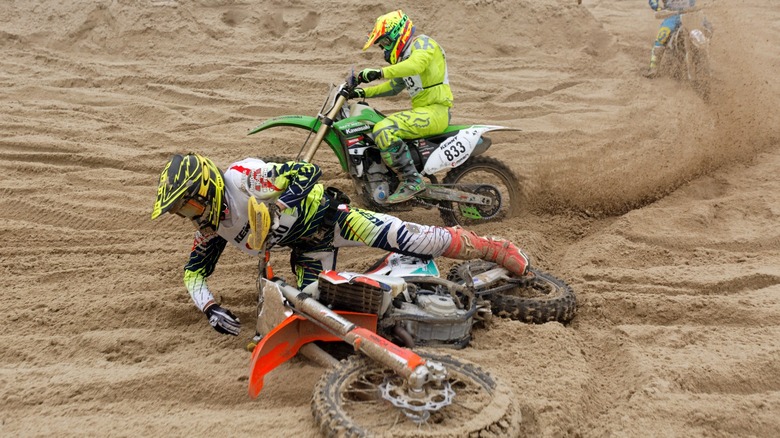Enduro Bikes Explained: How They're Different From Other Motorcycles
On the surface, an enduro bike looks just like any off-road motorcycle, with its taller stance, rugged tires, and relatively thin body. However, as the name suggests, enduro bikes are designed specifically for enduro events — long courses held in open country with varying terrain designed to test the motorcycles' and riders' endurance.
The enduro bike and its rider must survive different kinds of terrain like roads, deserts, forests, swampland, and even rivers. It should also be reliable enough to bring its rider across the harsh terrain to the finish line, with the most challenging enduro races like the Dakar Rally Motorbike Class, International Six Days Enduro, and Red Bull Romaniacs lasting up to five days or more.
To give riders the best advantage, dirt bike makers designed rugged and tough enduro bikes that are also light and maneuverable. What exactly makes an enduro bike, an enduro bike? How does it differ from other off-road motorcycles, and how can it give you an advantage over long-distance, cross-country trails?
Enduro bikes are lighter than most motorcycles
Off-road bikes are generally lighter and more maneuverable than other motorcycle types. This makes it easier for the rider to traverse narrow and uneven terrain, and pick up their bike if they crash or fall — which is more likely to happen on off-road trails. Furthermore, enduro bikes do not have parts and accessories that make them comfortable to ride or even road legal, thus further reducing their weight.
Despite the long-distance nature of enduro races, Adventure Moto Skills says most enduro bikes have a smaller fuel tank than other motorcycle types, like adventure and touring bikes. Because enduro bikes are light motorcycles, they should typically have enough fuel to reach the next checkpoint or finish line.
However, the enduro bike could still be heavier than the typical motocross motorcycle. Unlike the latter, which focuses on short races in purpose-built tracks, enduro bikes drive across longer tracks with many natural obstacles and different terrain types. These tracks are rougher, have many hard and sharp edges, and may feature steep ascents and descents that may damage your bike. Enduro motorcycles usually have some form of underbody protection, like a motorcycle skid plate or a sump guard, and could also feature adjustable suspension.
Some of the toughest motorcycles you can buy
Since enduro bikes are designed for tough terrain, they could take more abuse than the typical motorcycle. The enduro's lighter weight means it will take less damage in the event of a fall. It'll also be easier for the rider to pick up and resume riding, whether on pavement or on the trail.
Enduro motorcycles also have fewer accessories and parts. Thus, there are fewer things likely to break in the event of a crash. For example, some enduro bikes don't have turn signals and side mirrors, so you won't break them either by hitting branches or taking a tumble on the trail.
Although enduro bikes are designed to take a beating, they're also designed to be easy to repair. For example, Bike Bound shared an ad for the Yamaha IT250J Enduro, which featured an easily reachable tool kit for faster repair and a large quick-change filter sitting just behind the engine.
Enduro bikes are great for those who are into the outdoors and motorsports. They can take you places that four-wheeled off-road vehicles can't take you, and enduro tracks will challenge you both physically and mentally. Their only main drawback is that they're not street-legal, so you have to put them on a trailer if you want to explore the wilderness far from your home. If you don't have a trailer, or prefer riding your motorbike to your destination, then consider getting a dual-sport bike instead, like the Honda CRF300L Rally.


